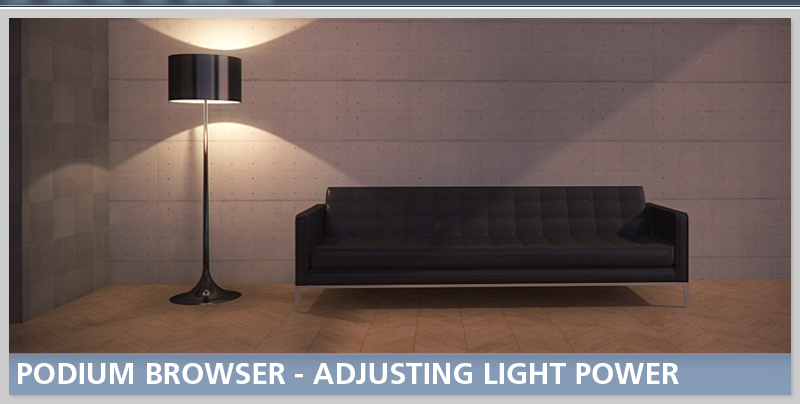Adjusting Light Power of Podium Browser Fixtures

Podium Browser gives users access to a huge range of light fixtures modeled after lighting collections from a variety of real-world manufacturers. To make the lighting process faster and easier for end-users, Podium Browser light fixtures are all realistically calibrated according to the specifications set by the manufacturer of each light.
In most cases this works to the user's advantage—it removes most of the guesswork from the lighting process, and provides users with an array of realistic lighting options that can be dropped into a scene very quickly.
However, we realize that there is no such thing as "one size fits all" in realistic rendering. If you spend enough time working with SketchUp and Podium, there's a good chance you'll eventually run into a situation where the default "Light Power" of a Podium Browser fixture simply isn't working for your scene.
What is Light Power?
In SU Podium, we use the term "Light Power" to correspond to the brightness of a light. Although it is not an exact correlation, a Podium light power of 1 is designed to approximate the brightness of a 60 watt lightbulb.
Most of our light fixtures have three dynamic component settings available to users: Off, Incandescent, and Halogen. Halogen lights typically cast cooler light than incandescent bulbs—this is reflected in the Podium light system. Choosing the incandescent dynamic setting will give your warm, yellowish cast, while the halogen setting uses a cooler hue.
How do you change Light Power for a Browser light fixture?
Most of our Podium Browser light components use an Omni point light to cast illumination into your scene, however because of the way many of the lights are constructed, it can be difficult to select the light from inside the SketchUp viewport. The easiest way to select a Podium Browser light is from the SketchUp outliner window.
The following video goes through the steps of changing the light power of a Podium Browser light fixture:
Please click here to link directly to the video if the embedded version isn't working in your browser.
